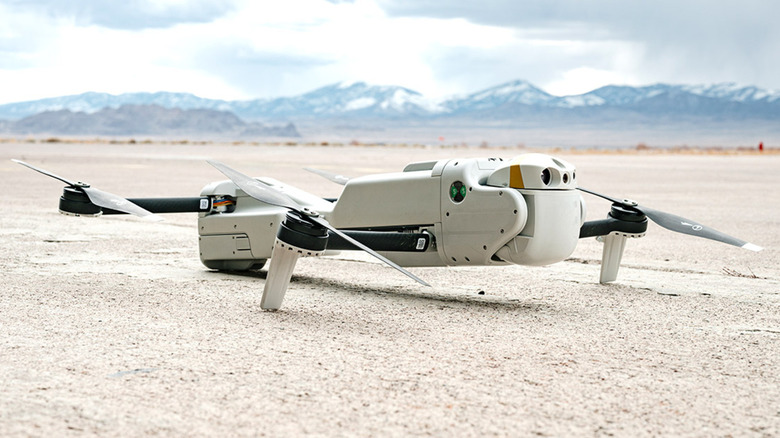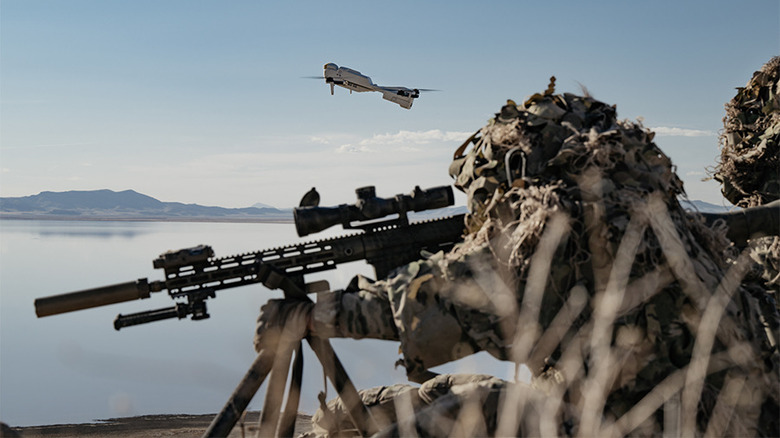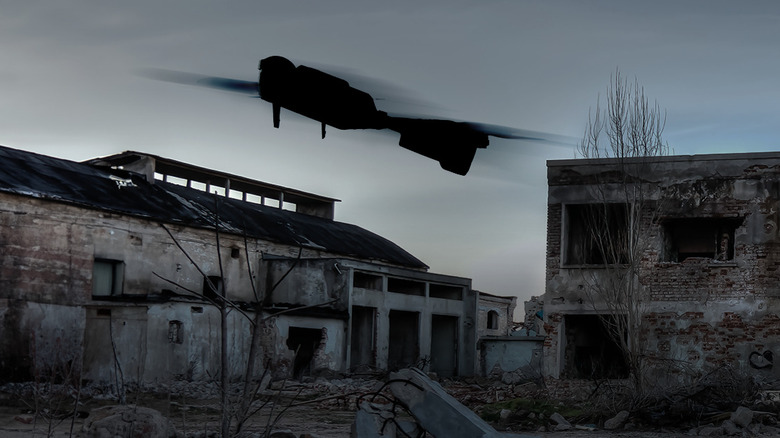The US Marine Corps Just Revealed Rogue 1: Its New Exploding Drone
On Tuesday, the U.S. Marine Corps and Teledyne FLIR Defense unveiled the "Rogue 1" — a vertical take-off and landing (VTOL) kamikaze drone with some interesting features: the warhead can be swapped on the field, and if an attack is aborted, the drone can disable its explosive payload, land, and be recovered by the operating Marine for reuse.
Teledyne FLIR Defense is expected to deliver a batch of 127 Rogue 1 units to the Marine Corps for testing soon. The contract is valued at $12 million, so each system should come to around $94,000 apiece. It's very expensive as far as loitering munitions go, but part of the high cost can be explained by the low initial batch. As production ramps up, the drones will (hopefully) become more affordable.
The Rogue 1 is one of three systems the Corps is pursuing as part of its Organic Precision Fires-Light (OPF-L) program. The goal of OPF-L is to equip Marine fireteams with the capability to deploy loitering munitions whenever needed, effectively reducing their reliance on air support and increasing their "effective range." This capability has been long in the work at the Corps. As early as 2018, according to the Marine Times, the service has conducted experiments with a "Drone Marine" — a single marine carrying six drones — to great success. Rogue 1 and similar drones adopted as part of OPF-L should soon bring experimentation to reality.
What Is the Rogue 1 Drone?
Every Rogue 1 munition comes neatly packaged in a tube that can be worn on the back. When deployed, the operator only needs to unfold its propellers, lay it on the ground, then take off like a consumer DJI Mavic. Depending on the mission, Marines can select and arm the drone with a suitable warhead (which is a palm-sized module that can be plugged into the front of the drone.)
According to Teledyne FLIR Defense, the options include a fragmentation warhead for anti-personnel roles (called "Forward Fragmenting" by the company.) This warhead can be set to airburst, exploding mid-air and raining shrapnel on the target. Against armor, the drone can be fitted with an Explosively Formed Penetrator (EFP) to turn the Rogue 1 into a "smart" guided anti-tank missile. During training, a dummy training warhead can be fitted so the Marines can familiarize themselves with the drone without destroying it.
Control is done via a tablet through which an operator can flexibly set engagement parameters, such as the height of the airburst effect and the angle at which the munition will approach the target. Remarkably, the drone has a "wave off" feature that'll allow it to cancel an ongoing attack at the very last minute when, for instance, civilians unexpectedly enter the area. The drone can loiter for 30 minutes and, if kinetic action is no longer required, it can "safe" its payload, go home, and be recovered for use at another time.
How Rogue 1 Fares Against Other OPF-L Entrants
Three companies were awarded a multi-million contract for the Offensive Precision Strike-Loitering Munition (OPF-L) program: Teledyne FLIR Defense, AeroVironment, and Anduril Industries. Currently, we know the solutions offered by AeroVironment and, now, Teledyne FLIR Defense. Anduril is still radio-silent on what it's bringing to the table.
AeroVironment's offering is no other than the Switchblade series of drones. Out of the three, the Switchblades are the only war drone that's been combat-proven. They've been used very effectively by the Armed Forces of Ukraine as a front-line strike weapon and for deep behind-enemy-line assassinations.
Between the two, the Rogue 1 is notably easier to deploy. While the Switchblade has to be launched from a mortar-like launcher using compressed air, the Rogue 1 can take off independently. Additionally, the Rogue 1 has the distinct advantage of having swappable warheads and an arming system for reuse. The warhead for Switchblades differs from model to model, with the Switchblade 300 a general-purpose warhead and the 600 an anti-tank one (likely a tandem charge). It also cannot be recovered once launched.
The only thing we know about Anduril's bid is that it's a VTOL drone, which doesn't fit the description of their well-known ALTIUS series suicide drones, which have a fixed-wing design similar to the Switchblades. The final product from Anduril should look similar to the Rogue 1's quadcopter design. It'll be interesting to see what capabilities it'll offer compared to the Rogue 1 once it's finally unveiled!


